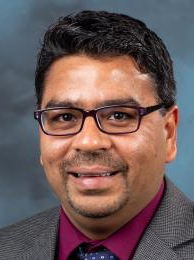Seminars
Dr. Prashant Jain
Nuclear Energy and Fuel Cycle Division
Oak Ridge National Laboratory
Opportunities for Thermal-Hydraulics and CFD Modeling to Define the Future of Nuclear and Clean Energy Systems

ABSTRACT: In recent times, there is a greater push across the society to define, and hope to realize, a net zero carbon future, in which we achieve 100% clean electricity on our grid by 2035 and net zero emissions across the broader economy by 2050. This is, indeed, a very ambitious goal and vision that is unlikely to realize without large-scale deployment of safe, reliable, and clean nuclear power. The advanced nuclear reactors would need to be deployed at various scales— including micro, small, and large baseload levels. In addition to electricity, these nuclear units would also supply direct energy for process heat, clean hydrogen production, industrial chemical applications, seawater desalination, and others. Some advanced reactors, like microreactors and fission batteries, would most likely become smart, intelligent, and auto-operable devices. All these smart devices may rely on grid-integrated digital twins to operate efficiently and serve as backups to close any intermittency gaps in renewable electricity. Physics-based numerical modeling tools, such as computational fluid dynamics (CFD), thermal-hydraulics, multiphysics, and multiscale couplings, will be essential to develop a robust and reliable digital twin of a nuclear system. Utilizing reduced-order surrogate models with emerging Machine Learning (ML) arts, any high-fidelity models inside a digital twin would need to run in real-time to support the reactor operation, feedback from a smart grid, and any safety protocols during off-normal scenarios. This presentation will provide an overview of critical capabilities, expertise, and resources at ORNL in the CFD and thermal-hydraulics modeling areas while providing some perspectives on how ML can be used to improve the state of the art.
BIOGRAPHY: Dr. Prashant Jain is a Sr. R&D staff member and the Group Leader for Thermal Hydraulics research in the Nuclear Energy & Fuel Cycle Division at ORNL. Prashant received his MS (2006) and Ph.D. (2010) in nuclear engineering from the University of Illinois, Urbana-Champaign, and his BTech (2004) in mechanical engineering from the Indian Institute of Technology, Bombay. He has over 15 years of experience in nuclear thermal design and safety analyses, computational fluid dynamics (CFD), single- and two-phase turbulent flows and heat transfer, advanced multiphysics modeling, analytical benchmarks, lattice Boltzmann method, and parallel scientific software development. At ORNL, he leads the development of advanced three-dimensional multiphysics design and safety basis models for the present highly enriched uranium core and the proposed low-enriched uranium core designs of the High Flux Isotope Reactor (HFIR). He was also the principal developer of the ORNL’s lattice Boltzmann method CFD code, PRATHAM, and the thermo-fluidics Thrust lead for the Transformational Challenge Reactor (TCR) project. Prashant is a recipient of the American Nuclear Society (ANS) Mark Mills Award for his doctoral research on lattice Boltzmann methods and UT-Battelle’s 2019 Mission Support Award for his contributions towards the HFIR event causal analysis.